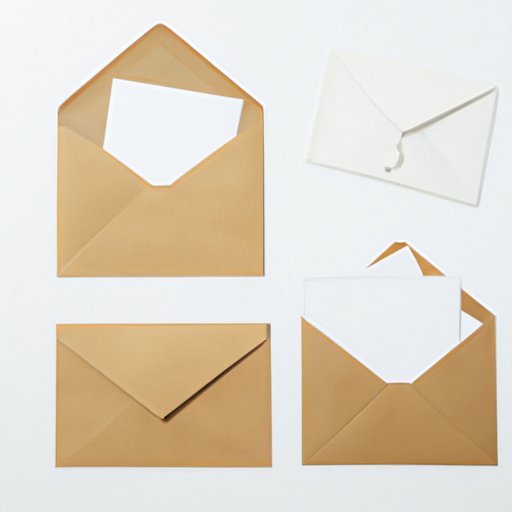
I. Introduction
If you’ve ever been unsure about how to fill out an envelope for mailing, you’re not alone. Many people find the process confusing or forget essential details, leading to problems with delivery. In this article, we’ll cover everything you need to know to fill out an envelope correctly and personalize your mail.
II. Step-by-step Guide
Before you start addressing your envelope, make sure you have the correct postage and stationery. Then, follow these steps:
- Write the recipient’s name and title on the first line
- Add the recipient’s street address on the second line
- Include the city, state, and zip code on the third line
- Write your return address in the top left corner
- Place the stamp in the top right corner
- Double-check for accuracy and legibility
It’s essential to use clear, legible writing and dark ink, such as black or blue. Avoid using pencil or other light-colored inks that may be challenging to read. If you make a mistake, cross-out the error and write the correction above it.
III. Visual Tutorial
For those who prefer a visual guide, images can be immensely helpful. Below is an annotated picture of a standard envelope:

As you can see, the recipient’s name and address go in the middle, while your address goes in the top left corner. The stamp goes to the top right of the envelope, and it’s essential to leave enough space between any text and the edges of the envelope to accommodate machine processing.
IV. Common Mistakes
Despite the simplicity of filling out an envelope, people often make mistakes. These include:
- Misspelling the recipient’s name or address
- Not including the zip code or state abbreviation
- Forgetting to add or illegible return address
- Incorrectly placing the stamp or forgetting it altogether
To avoid these common mistakes, take your time in filling out the envelope and double-check all the details before mailing it. It’s also a good idea to have someone else review it to catch any errors you may have missed.
V. Envelope Types
There are several envelope types you may encounter, and each may require slightly different information. Here are the most common envelope types:
- Standard envelopes: Used for everyday mail and require the recipient’s name, address, and zip code
- Window envelopes: These envelopes have a clear plastic window that shows the recipient’s address, so you only need to add your address as the return address on the top left corner
- Return envelopes: Used for paid bills or donations and include your return address on the front, so the recipient can mail it back to you
Make sure you fill out each envelope correctly according to its type to ensure successful delivery.
VI. Personalization
Filling out an envelope doesn’t just have to be about function – it can be fun, too! Here are some creative ways to personalize your mail:
- Add stickers or washi tape to decorate the envelope
- Use a unique stamp or draw something on the envelope
- Choose specialty envelopes with fun designs or colors
Personalizing your mail is a great way to show someone you care and make your mail stand out from the rest.
VII. Address Label
Another way to make filling out envelopes more efficient is to use address labels. Here’s how:
- Print out your address labels using a label maker, word processor, or online service
- Peel off the label and stick it in the top left corner of the envelope
Address labels are an excellent option for those who send many letters or have arthritis or similar conditions that make writing difficult.
VIII. Conclusion
Filling out an envelope accurately is essential for successful mail delivery. By following our step-by-step guide, avoiding common mistakes, and personalizing your mail, you can ensure your letters and packages arrive on time and in the right hands.





